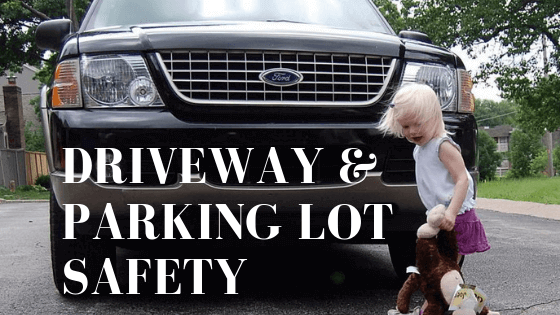
Every year, thousands of children are injured or killed because a driver could not see them while backing up or slowly pulling forward in parking lots and driveways. These predictable and preventable tragedies are called frontovers and backovers.
What is a blindzone? A blindzone is an area where a child cannot be seen by the driver of a vehicle. Every single vehicle has a blindzone in front, on the sides and behind the vehicle. Even adults can fall victim to a driver not being able to see them.
Quick Facts
- Children age 5 and under are the most at risk
- Predominant age of victims is one year olds (12-23 months)
- 70% involve a parent or close relative is behind the wheel
- Over 60% of backing up incidents involved a larger size vehicle (truck, van, SUV)
Why young children are so vulnerable: Young children are unpredictable. They have very poor judgment, little understanding of danger and no impulse control. In addition, young children do not recognize boundaries such as the yard, street, driveway, sidewalk or parking lot. Toddlers have established independent mobility between the ages of 12-23 months, but the concept of personal safety is absent.
Safety Tips for Parents & Drivers
- Backup cameras: All new vehicles (2018 +) come with them. But, you don’t have to wait to get one. Backup cameras can be added to any vehicle!
- Create habits to ensure children are directly supervised every time someone is arriving or leaving the home. Most driveway accidents occur because a toddler leaves the home unnoticed and gets into the blindzone of a vehicle arriving or leaving. The scenario is so common that it has a name, “bye-bye syndrome.” Many times a child wants to greet someone or say “bye-bye.”
- Install locks at the top of doors in your home so children cannot get outside on their own. Keep doors locked at all times.
- Driveway: Do not allow children to play in the driveway, parking lot or cul-de-sac unsupervised. If you have a fenced in area, always use that instead of the driveway for play.
- Parking lots: Never allow toddlers to walk in parking lots - carry them or use a stroller or shopping cart. Hold hands with older children and teach them to watch for backing cars because drivers can’t see them.
- Circle of Safety: Walk completely around your vehicle scanning the area for children prior to moving a vehicle. If you see or hear children, be sure they are directly supervised by an adult.
Tips to teach children
Please talk to your children about the dangers of vehicles, but never rely on them to protect themselves. Even children who know about vehicle dangers can place themselves in dangerous situations. It only takes one brief moment of distraction or a ball rolling out into the parking lot. Children of all ages have been run over and injured or killed by vehicles.
- Parked vehicles might move. Warning signs that a vehicle might move include a running engine, brake lights or smoke coming from the exhaust pipe on a vehicle.
- The driver may not be able to see you.
- Never walk behind or in front of a running vehicle.
- Never play in parking lots, driveways, streets or cul-de-sacs.
- When walking on the sidewalk, watch for cars pulling into or leaving driveways.
Technology
Automatic emergency braking technology is now available in select vehicle makes and models. Drivers should be cautioned that not all forward collision avoidance technologies have the ability to sense the presence of a very small child. Also available on select vehicle makes and models is technology that uses a series of cameras and sensors to allow the driver to see all sides of the vehicle prior to moving. This referred to as birds-eye or 360° view technology.

